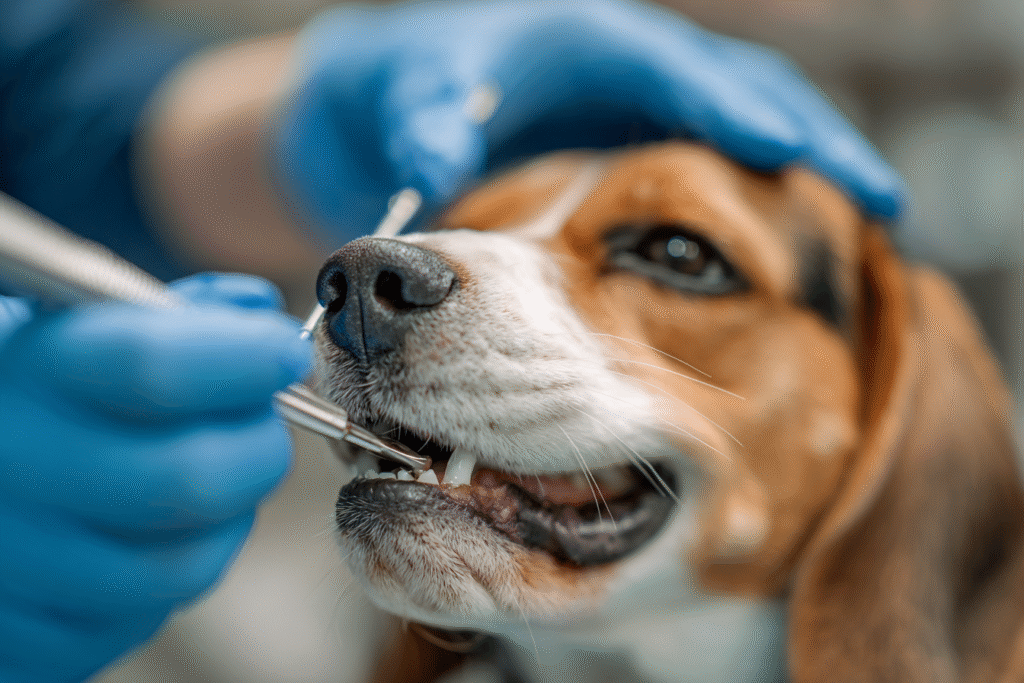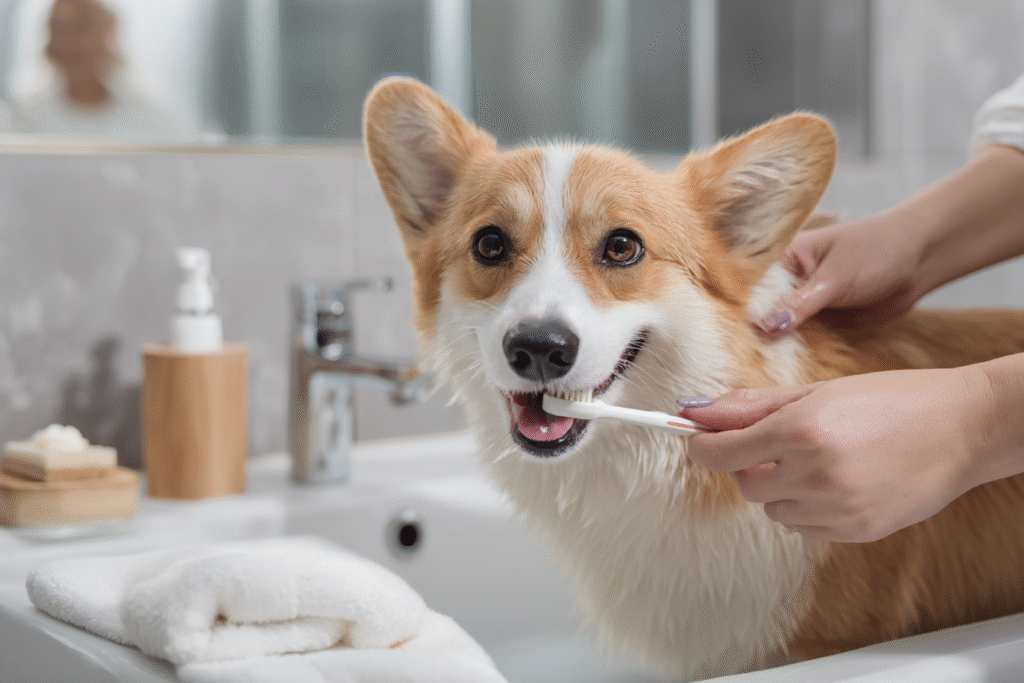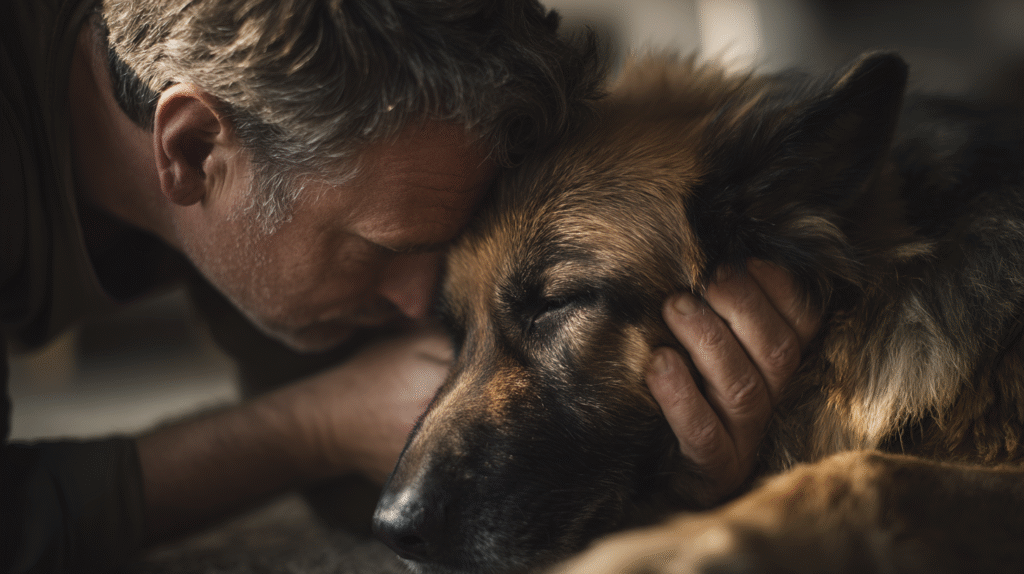A Pet Owner’s Guide to Recognizing and Treating Dog Toothache Pain
It’s heartbreaking to see your furry friend suffering from dog toothache pain.
This discomfort is often a clear indicator of underlying dogs teeth problems and can even signal serious issues like a dog dead tooth.
Recognizing the subtle signs of dog teeth pain is the first and most crucial step toward addressing the many potential oral problems in dogsthat can impact their overall health and happiness.
Consequently, understanding these issues empowers you to act swiftly and seek the proper care for your beloved companion.
Table of Contents
- Recognizing the Subtle Signs of Dog Teeth Pain
- Common Causes of Oral Problems in Dogs
- The Danger of a Dog Dead Tooth
- Professional Treatments for Common Dogs Teeth Problems
- Vidatox: A Supportive Option for Pain and Inflammation
- Preventative Care: Stopping Dog Toothache Pain Before It Starts
- Frequently Asked Questions
Recognizing the Subtle Signs of Dog Teeth Pain
Dogs are masters at hiding discomfort, a trait inherited from their wild ancestors.
Therefore, identifying dog teeth painrequires you to be an attentive observer.
You might not hear them complain, but their behavior can speak volumes.
Look for changes like a sudden reluctance to chew on their favorite toy or a new preference for softer food.
Тhey might drop food while eating, paw at their mouth, or shy away when you try to pet their head. Other signs of dog toothache pain include excessive drooling, bad breath, or visible swelling around the jaw.
If you notice any of these changes, it’s a clear signal that your dog is experiencing discomfort and needs a veterinary check-up.
These symptoms are often the first alert to more significant oral problems in dogs.

Common Causes of Oral Problems in Dog
Several conditions can lead to severe dog toothache pain. Understanding these common oral problems in dogs is essential for prevention and treatment.
Gingivitis
Gingivitis is simply the inflammation of the gums. It’s the earliest stage of periodontal disease and, thankfully, it’s reversible.
Plaque, a film of bacteria, builds up on the teeth and irritates the gums, causing them to become red and swollen.
Mild gingivitis is one of the most common dogs teeth problems found by vets during routine exams.
Periodontal Disease
If gingivitis is left untreated, it progresses into periodontal disease. This condition affects the tissues that support the teeth, including the bone.
As the disease worsens, it causes significant bone loss, which can make teeth loose and lead to excruciating dog toothache pain.
This is one of the most prevalent oral problems in dogs over three years of age.
Plaque and Tartar Buildup
Plaque begins forming on teeth just minutes after a meal. If not removed through brushing, this plaque hardens into tartar (or calculus).
Tartar provides a rough surface for even more plaque to accumulate, accelerating the development of dogs teeth problems. Only a professional cleaning can remove tartar.
Tooth Fractures
Dogs love to chew, but hard objects like antlers, bones, or hard plastic toys can cause tooth fractures.
When a tooth breaks, it can expose the inner pulp, which contains nerves and blood vessels.
This exposure is incredibly painful and allows bacteria to enter, leading to infection and ultimately a dog dead tooth.
A fractured tooth is a frequent cause of acute dog teeth pain.
The Danger of a Dog Dead Tooth
A dog dead tooth is a serious issue that requires immediate veterinary attention. When a tooth fracture or severe trauma allows bacteria to invade the pulp cavity, the tooth’s nerve and blood supply die.
This process can be intensely painful.
Initially, the exposed nerve causes sharp dog teeth pain. Once the nerve dies, the acute pain might subside, but the problem is far from over.
The dead tissue inside the tooth becomes a breeding ground for bacteria, leading to an abscess, which is a pocket of pus at the tooth’s root.
An abscess can cause significant swelling, systemic infection, and immense dog toothache pain.
Therefore, a dog dead tooth is not just a cosmetic issue; it’s a source of chronic infection and pain that can affect your dog’s entire body.
Ignoring a dog dead tooth is a serious risk to your pet’s health.

Professional Treatments for Common Dogs Teeth Problem
The right treatment for your dog’s dental issues depends entirely on the specific diagnosis.
For early-stage oral problems in dogs, like gingivitis, a professional cleaning under anesthesia is key.
This procedure, known as scaling and polishing, removes all plaque and tartar from above and below the gumline.
In cases of advanced periodontal disease, where there is significant bone loss, extraction of the affected tooth is often the best solution.
Removing a diseased tooth eliminates the source of infection and dog teeth pain, leading to a much healthier and more comfortable mouth.
When dealing with a fractured tooth or a dog dead tooth, the options are typically extraction or a root canal.
A root canal saves the tooth’s structure by removing the dead pulp and filling the cavity, while an extraction completely removes the source of the problem.
Your vet will recommend the best course of action for your dog’s specific dogs teeth problems.

Vidatox: A Supportive Option for Pain and Inflammation
When your dog is suffering from dog toothache pain, especially pain linked to inflammation or more serious oral conditions, exploring supportive therapies alongside veterinary treatment is a priority for any caring owner.
One such option that has garnered attention is Vidatox.
Derived from the venom of the blue scorpion, Vidatox is a natural homeopathic remedy recognized for its potent anti-inflammatory and analgesic (pain-relieving) properties.
These characteristics make it a compelling supportive treatment for managing the discomfort associated with various oral problems in dogs.
The active components in Vidatox work by helping to modulate the body’s inflammatory response.
For dental issues like severe gingivitis, abscesses from a dog dead tooth, or post-extraction recovery, managing inflammation is crucial for both comfort and healing.
By reducing inflammation, Vidatox can help alleviate the persistent throb of dog teeth pain, making your companion more comfortable as they recover.
This can improve their willingness to eat and drink, which is vital for their overall health.
Furthermore, some research into the components of blue scorpion venom suggests it may possess properties that inhibit the growth of abnormal cells.
While the primary concern with dogs teeth problems is usually infection and pain, oral tumors are also a serious consideration.
In cases where oral growths are present, Vidatox could potentially offer a complementary approach by supporting the body’s natural mechanisms to control tumor progression.
It is crucial to understand that Vidatox is not a cure for cancer, but a supportive therapy. When considering Vidatox as part of a pain management plan for your dog’s dental health, always consult with your veterinarian.
They can provide guidance on how Vidatox can be safely integrated into your dog’s primary treatment protocol to best address their dog toothache pain and support their recovery.
Preventative Care: Stopping Dog Toothache Pain Before It Starts
The best way to manage dog toothache pain is to prevent it from ever happening.
Daily toothbrushing is the gold standard for at-home dental care. Using a dog-safe toothpaste and toothbrush to gently clean the outside of your dog’s teeth can dramatically reduce plaque buildup.
In addition to brushing, providing safe dental chews and toys can help scrape away plaque. Look for products approved by the Veterinary Oral Health Council (VOHC).
Finally, regular veterinary check-ups that include an oral exam are non-negotiable.
These visits allow your vet to catch oral problems in dogs early, long before they cause significant dog toothache pain.
An investment in preventative care is an investment in your dog’s long-term health and comfort.

Frequently Asked Questions
Q1: What are the most common signs of dog toothache pain? The most common signs include a reluctance to eat or chew, dropping food, drooling more than usual, pawing at the mouth, bad breath, and visible swelling on the face or jaw. Your dog might also become irritable or withdrawn due to the discomfort from dog teeth pain.
Q2: Can I give my dog human pain medication for a toothache? Absolutely not. Many human pain medications, such as ibuprofen and acetaminophen, are toxic to dogs and can cause severe liver or kidney damage. Always consult your veterinarian before giving your dog any medication for dog toothache pain.
Q3: Is a dog dead tooth an emergency? Yes, a dog dead tooth should be considered a veterinary emergency. It is a source of significant pain and infection that can spread to other parts of the body. Prompt treatment is necessary to resolve the pain and prevent further complications.
Q4: How often should I have my dog’s teeth professionally cleaned? This depends on your dog’s breed, age, and individual predisposition to dogs teeth problems. Generally, small breeds may need their first cleaning by age two, while larger breeds might wait until age three. Your veterinarian will recommend the best schedule during your annual wellness exams.



